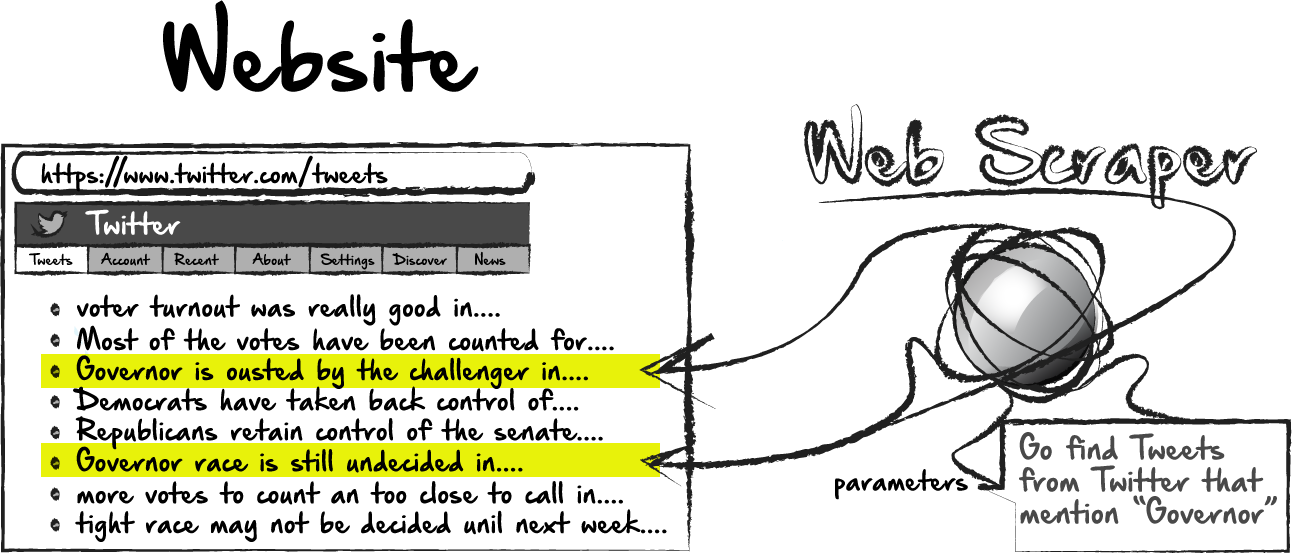Scraping Robot is one great tool that makes web scraping so much easier, but there are other ways to scrape the web that aren’t so efficient. One of these processes uses PHP coding. In this article, we’ll talk about the definition of PHP code and how someone could use it to scrape the web. Scraping simple HTML from the Web is not a problem in modern programming languages. While PHP is especially suited for web development, its ability to send HTTP requests is severely lacking. The Requests library for PHP developers is an excellent solution for sending HTTP requests to websites.
You may also interested in below Octoparse blogs on PhP and web crawling:
Before getting started, I'll give a quick summary of the web scraping. Web scraping is to extract information from within the HTML of a web page. Web scraping with PHP doesn't make any difference than any other kind of computer languages or web scraping tools, like Octoparse.
This article is to illustrate how a beginner could build a simple web crawler in PHP. If you plan to learn PHP and use it for web scraping, follow the steps below.
Web Crawler in PhP
Step 1.
Add an input box and a submit button to the web page. We can enter the web page address into the input box. Regular Expressions are needed when extracting data.
Step 2.
Regular expressions are needed when extracting data.
function preg_substr($start, $end, $str) // Regular expression
{
$temp = preg_split($start, $str);
$content = preg_split($end, $temp[1]);
return $content[0];
}
Step 3.
String Split is needed when extracting data.
function str_substr($start, $end, $str) // string split
{
$temp = explode($start, $str, 2);
$content = explode($end, $temp[1], 2);
return $content[0];
}
Step 4.
Add a function to save the content of extraction:
function writelog($str)
{
@unlink('log.txt');
$open=fopen('log.txt','a' );

fwrite($open,$str);
fclose($open);
}
When the content we extracted is inconsistent with what is displayed in the browser, we couldn’t find the correct regular expressions. Here we can open the saved .txt file to find the correct string.
function writelog($str)
{
@unlink('log.txt');
$open=fopen('log.txt','a' );
fwrite($open,$str);
fclose($open);
}
Step 5.
A function would be needed as well if you need to capture pictures.
function getImage($url, $filename=', $dirName, $fileType, $type=0)
{

if($url '){return false;}
//get the default file name
$defaultFileName = basename($url);
//file type
$suffix = substr(strrchr($url,'.'), 1);
if(!in_array($suffix, $fileType)){
return false;
}
//set the file name
$filename = $filename ' ? time().rand(0,9).'.'.$suffix : $defaultFileName;
//get remote file resource
if($type){
$ch = curl_init();
$timeout = 5;
curl_setopt($ch, CURLOPT_URL, $url);
curl_setopt($ch, CURLOPT_RETURNTRANSFER, 1);
curl_setopt($ch, CURLOPT_CONNECTTIMEOUT, $timeout);
$file = curl_exec($ch);
curl_close($ch);
}else{
ob_start();
readfile($url);

$file = ob_get_contents();
ob_end_clean();
}
//set file path
$dirName = $dirName.'/'.date('Y', time()).'/'.date('m', time()).'/'.date('d',time()).'/';
if(!file_exists($dirName)){
mkdir($dirName, 0777, true);
}

//save file
$res = fopen($dirName.$filename,'a');
fwrite($res,$file);
fclose($res);
return $dirName.$filename;
}
Step 6.
We will write the code for extraction. Let’s take a web page from Amazon as an example. Enter a product link.
if($_POST[‘URL’]){
//---------------------example-------------------
$str = file_get_contents($_POST[‘URL’]);
$str = mb_convert_encoding($str, ‘utf-8’,’iso-8859-1’);
writelog($str);
//echo $str;
echo(‘Title:’ . Preg_substr(‘/<span id= “btAsinTitle”[^>}*>/’,’/<Vspan>/$str));
echo(‘<br/>’);
Web Scraping Php
$imgurl=str_substr(‘var imageSrc = “’,’”’,$str);
echo ‘<img src=”’.getImage($imgurl,”,’img’ array(‘jpg’));
Web Scraping Php Tutorial
Then we can see what we extract. Below is the screenshot.
Web Crawling for Non-coders
You don't need to code a web crawler any more if you have an automatic web crawler.
As mentioned previously, PHP is only a tool that is used in creating a web crawler. Computer languages, like Python and JavaScript, are also good tools for those who are familiar with them. Nowadays, with the development of web-scraping tech, more and more web scraping tools, such as Octoparse, Beautiful Soup, Import.io, and Parsehub, are emerging in multitude. They simplify the process of creating a web crawler.
Take Octoparse Web Scraping Templates as an example, it enables everyone to scrape data using pre-built templates, no more crawler setup, simply enter the keywords to search with and get data instantly.
Artículo en español: Crear un Simple Web Crawler en PHP
También puede leer artículos de web scraping en el Website Oficial
